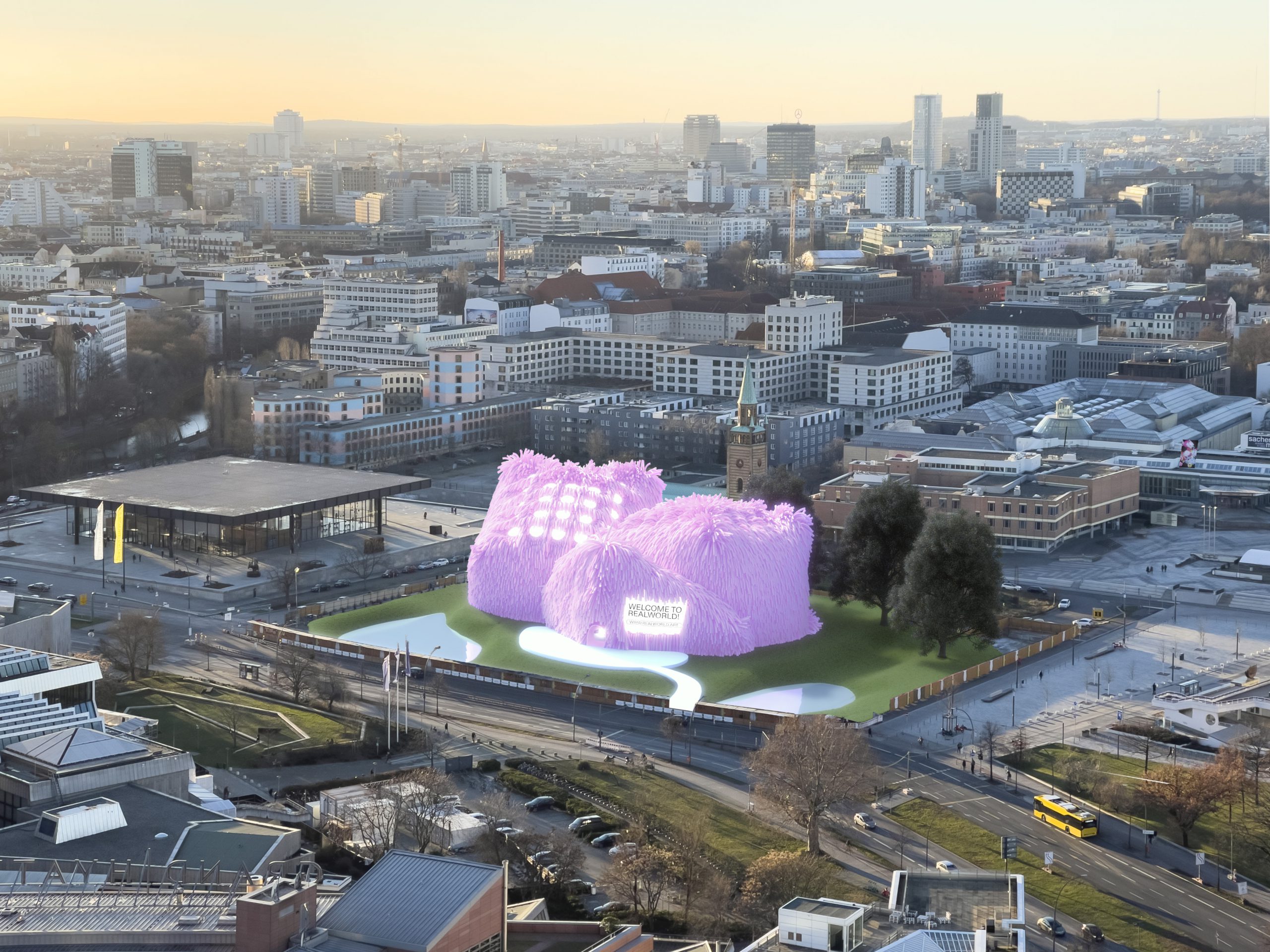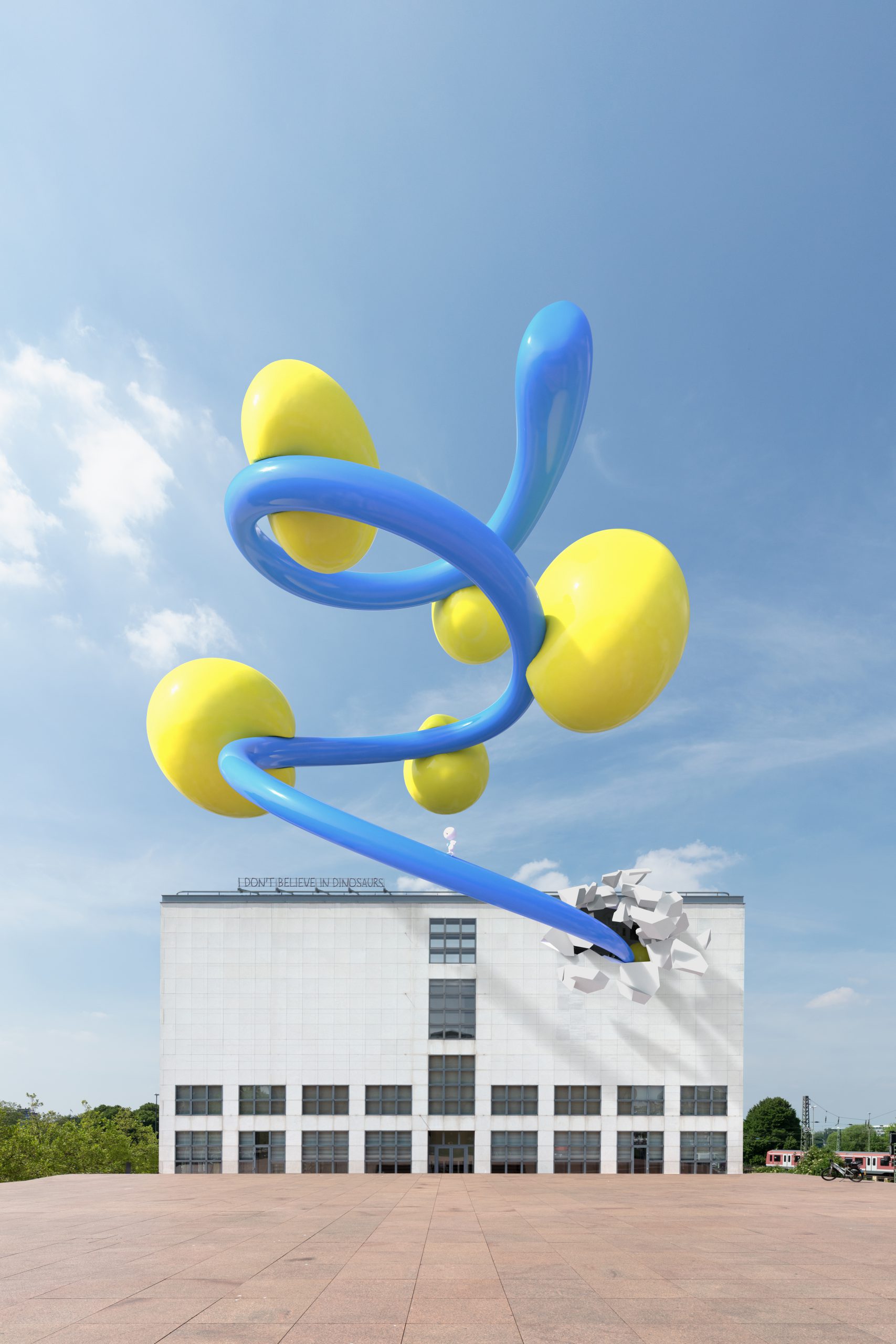About
New Float is an exhibition space situated in one of the most discussed areas of the German capital Berlin. It has no physical presence. Instead it is geolocated to the coordinates of the Kulturforum next to Potsdamer Platz in the heart of the city.
The building is positioned next to Mies van der Rohe’s Neue Nationalgalerie, Hans Scharoun’s Philharmonie and Germany’s National Library. The physical building plot we’ve picked for our building is currently the construction site for the Museum of the 20th Century by star architects Herzog & de Meuron. The building is supposed to cost more than 450 million Euro and is heavily criticized for its environmental impact. By choosing this particular location, we make use of a vacant space that is not accessible until the construction is finished in 2026.
With New Float, we highlight the necessity for creating digital spaces for a digital society. While we’re looking forward to visiting the new Museum of the 20th century, we also want to illustrate the possibilities of digital spaces and the lack of focus on the digital in traditional institutions. Without positioning the digital against the physical we argue for dedicating more attention and resources towards natively digital art and spaces and for appreciating its properties, advantages as well as difficulties and differences in its perception.
Neither can the traditional world of art and its institutions miss the audiences, discussions and talent of the digital sphere. Nor can the digital community miss the balance, continuity and democracy of public institutions.
Introvideo
The Collection
After working on digital exhibitions and experiences for more than a decade, Manuel Rossner laid the ground for his collection with the purchase of Manuel Fernandéz work “NEW RUINS. GOOGLE EARTH TOUR” in 2021. The artwork was on view in the exhibition “What We Call Sculpture” in Rossner’s first digital space Float Gallery in 2013. The new modus operandi of the digital art scene, built on the exchange of NFTs, added a long missing longevity to digital works of art. It didn’t take long for Rossner’s collection to grow to more than 100 artworks.

Now the collection brings together a large range of works, ranging from images to video and objects. It includes pioneers of digital art, such as Dr. Bill Kolomyjec and established artist from the world of contemporary art like Simon Denny, John Gerrard or Katharina Grosse. The focus of the new collection is on the emerging talents and protagonists of the digital community like Addie Wagenknecht, Harm van den Dorpel, Iskra Velitchkova and Leander Herzog.
Another objective of the collection is to promote the values of the digital community as an open, diverse space. Examples of this undertaking are a range of artworks that have been created for supporting Ukraine against Russia’s unjustified aggression. Another spearheading project confronting the problem of inequality in the community itself and beyond is the UNSIGNED collection by Operator and Anika Meier. It illustrates how work is valued alarmingly differently based on the gender of its creator.
It is worth noting that the work in the collection also includes valuable rarities, but largely consists of bigger editions and series. Shaping digital collectorship as an accessible and engaging community activity is another fundament of the New Float collection. As a result, the presentation of the collection is supposed to promote the artist’s work and draw in new audiences that enjoy experiencing and interacting with the art on display and the community.
The Architecture
For our fluffy, pink building, digital architect Manuel Rossner was inspired by several concepts of amazing masterpieces of architecture. In addition, it draws from the new dynamics of the digital. The basic shapes stem from a cloth simulation that shows three pillows falling from the sky next to Berlin’s Neue Nationalgalerie. The three pillows contain different functionality: In front, the entrance hall houses a lobby, a library/bookshop and SPACE BAR, a conceptual metaverse restaurant. The second pillow is used for temporary projects. It’s often used by Rossner to create new spatial experiences in an experimental manner. Additionally new exhibitions are hosted in an irregular manner. In the third pillow you’ll find selected works from the New Float collection.
While physical museums are built to last forever, digital experiences refresh around 60 times per second on each visitor’s device. The medium itself implies a dynamic architecture. New Float uses this condition by staying flexible. All of its spaces can be modified or new ones added. The design of the collection part even responds to each artwork. The walls group different artworks together or separate them from others in response to their interpretation. Unlike temporary walls in traditional exhibition design, it is the main building that changes shape. This concept is especially visible in the balcony that was created for Diane Drubay’s work in the presentation of the collection.

Manuel Rossner
After starting his first digital space Float Gallery in 2012, Rossner’s experience in creating digital exhibitions was based on commissions like his extension building for NRW-Forum Düsseldorf (2017), architecture projects for KÖNIG GALERIE in metaverses such as Decentraland (2021). Often, his digital spaces merge with his own artistic practice.
His work HOW DID WE GET HERE? for Hamburger Kunsthalle consisted of a drawing of his, breaking through the walls of the institution. The gamified experience was presented together with the collection of the Kunsthalle that consisted of works by Cy Twombly, Gerhard Richter, Jean Dubuffet and Francis Bacon.
Rossner’s digital works were commissioned by Kunsthalle Baden-Baden, the Grand Palais in Paris, MdbK Leipzig, Highsnobiety, Hyundai Motor Studio Busan and many more. His latest digital space for Kunsthalle Zürich featured one of his paintings created in Virtual Reality. It also presented a selection of digital artists like Kim Asendorf, Nancy Baker Cahill, Rafaël Rozendaal, Jan Robert Leegte and Lorna Mills.
With New Float, he expanded his engagement in digital art and exhibitions to his own space. Here he can work on new ideas and visualize his path in digital art by collecting work of his colleagues.
